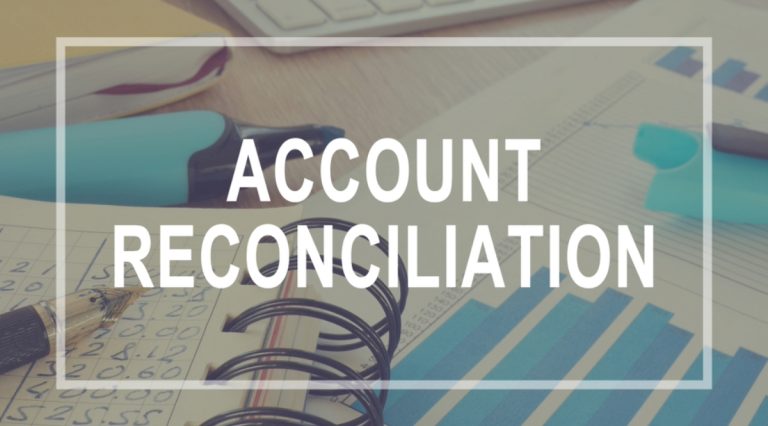Main take:
- Account reconciliation ensures financial accuracy and compliance with accounting standards such as GAAP, detects discrepancies, corrects errors, and prevents fraud.
- It benefits both businesses and individuals by maintaining financial management and accurate reporting.
- Various reconciliations, such as bank, supplier and intercompany reconciliation, help in validating the financial records.
- Reconciliation differences can occur for various reasons. These reasons include timing, missing transactions, or errors in financial statements. These differences highlight the importance of the reconciliation process to financial health.
Have you ever thought what it is Account settlement exactly? Why should you obtain all the necessary information about this specific financial record as an educated professional? And ultimately, why is it so important to understand this if you work in small businesses, banking, and more?
“Reconciliation” in accounting means checking whether two sets of records are identical and in agreement.
Businesses create a year-end balance sheet to show their financial position at the end of the fiscal year. It gives a picture of their financial situation during that period.
This comprehensive financial information is meticulously documented in their general ledger. But how does it apply to accounting? Let's get all the necessary details on this topic, shall we?
Definition and explanation of account reconciliation
Account reconciliation is an inevitable tool to address discrepancies between financial records or financial record balances. Timing differences in payments and deposits can result in variances, which auditors take into account when evaluating financial records.
However, unexplained variations in financial transactions may raise concerns about potential fraud or financial manipulation, affecting a company's cash flow.
Businesses and individuals can reconcile their financial records regularly, following its rules, on a daily, monthly, quarterly or annual basis.
A vital financial process that prevents errors

Account reconciliation is important to maintain accurate financial records, especially during a specified bookkeeping period, while following accepted accounting principles.
In double-entry bookkeeping, reconciliation is important to ensure accuracy. Aligns the debit and credit entries for each transaction.
A rigorous audit process includes checking cash flow, bank and credit card statements to ensure adherence to GAAP standards.
What is bank account reconciliation?
To ensure accuracy, bank account reconciliation checks whether a company's financial records match its bank statements.
This precise process detects errors and protects against fraud or unauthorized withdrawals from the bank account.
Why are routine account reconciliations necessary?
Routine reconciliations of accounts are an important aspect of accounting, which are usually performed monthly to verify the accuracy of a company's financial records. These regular settlements provide many benefits to the business, including:
- Identify and correct data entry errors.
- – Making the necessary adjustments to the time difference in banking transactions, fees and interest.
- Ensuring the accuracy and legitimacy of the financial statements issued by the company.
- Detecting fraud cases.
- Compliance with financial regulations.
- Adequate preparation of tax returns.
How exactly does it work?

Account reconciliation methods can vary, but often adhere to Generally Accepted Accounting Principles (GAAP), necessitating double-entry bookkeeping. This widely adopted approach records every financial transaction in two places, ensuring accuracy in business records.
In double-entry bookkeeping, each transaction is assigned to two different accounts: one as a credit and one as a debit.
For example, when a company makes a sale, it records a debit (for example, cash or financial accounts receivable) and a credit (for example, sales revenue). Reconciliation acts as a tool to identify errors in these entries, ensuring that they are balanced.
Likewise, once a particular company receives an invoice, it debits accounts payable and debits expenses. It debits accounts payable and credits the cash account when the bill is paid. Debts and balances must always be reconciled, and their sum is zero.
Example: Mary's Lawn Care Business
For example, consider Mary's lawn care business. She initially invested $2,000 of her savings in equipment. She adds $2,000 to her cash account and subtracts the same amount from her assets (equipment) using double-entry bookkeeping.
When she earns $500 on her first project, she adds revenue and debits accounts receivable for $500. These debts and balances are carefully reconciled, while maintaining financial accuracy.
This process helps in preparing cash flow statements, journal entries, settlement of checks and profits in different accounting periods. In addition, it assists in internal accounting procedures.
Explain the example
Mary's garden care
religion
- Cash: $2000
- Equipment: $2000
credit
- Revenue: $500
- Accounts Receivable: $500
Alternatively, a double-entry journal entry can be executed that affects only the balance sheet. When a company takes out a $10,000 loan, an accountant will record it in two ways on the balance sheet.
First, it will be recorded as an increase in cash. Second, it will be recorded as an increase in long-term debt.
Another way to perform reconciliation involves the financial record transfer technique. This method compares receipts and canceled checks to entries in the general ledger, such as personal accounting adjustments.
What are the different types of reconciliation?

- Bank Reconciliation: This involves aligning the business's financial records with data received from the bank.
- Vendor Reconciliation: You compare data provided by vendors or suppliers with the company's accounts payable ledger.
- Intercompany reconciliation: This process reconciles data and transactions between the parent company's units, divisions, or subsidiaries.
- Business-specific reconciliation: Focuses on reconciling accounts within specific business units, such as inventory inventory or expense reconciliation.
- Petty Cash Reconciliation: Verifies the accuracy and substantiation of all transactions in the petty cash fund.
- Credit card reconciliation involves verifying purchase receipts with credit card statements issued by the card company.
- General ledger reconciliation is usually performed against the general ledger. The general ledger serves as the primary source of a company's financial records.
Reasons for reconciliation contradictions – explained
- Timing Differences: Differences arise due to differences in the timing of reporting transactions. If the ledger says $100,000, but the bank statement says $110,000 because of an unpaid check, that's a timing difference.
- Missing Transactions: These discrepancies stem from inadvertently deleted financial data, such as transactions. The trial balance in the general ledger may show $180,000. However, supporting documents show $200,000. This $20,000 difference is due to missing transactions.
- The balance in the ledger is $149,000. However, the bank statement shows $149,900 due to a bank charge error. This means there is an error of $900. This error affects retained earnings.
- Errors or errors can cause discrepancies between financial records, such as when the ledger balance is $149,000, but the bank statement shows $149,900 because of a $900 error affecting retained earnings.
minimum
Account reconciliation is essential to maintain financial accuracy and comply with standards such as GAAP. It detects discrepancies, corrects errors, and prevents fraud, benefiting companies and individuals.
This meticulous process ensures accurate financial management and reporting, which contributes to overall financial well-being.

